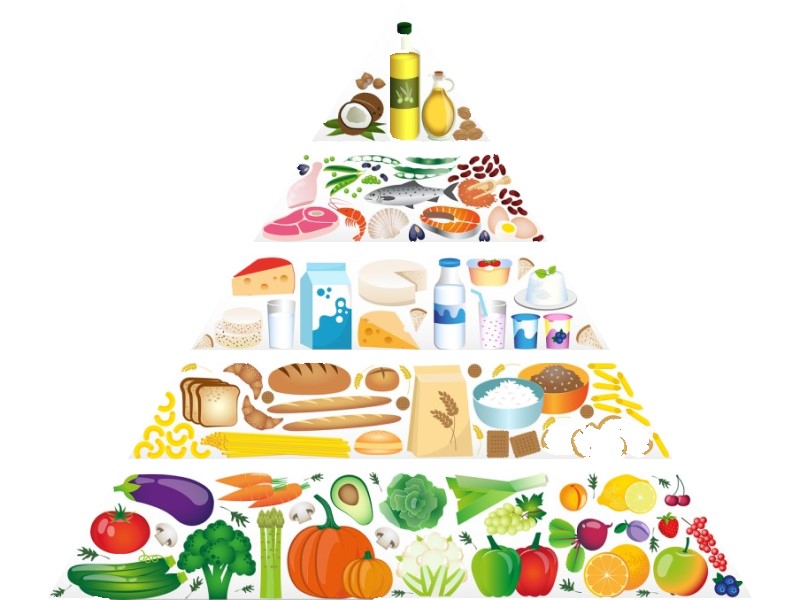There’s nothing more exciting than watching your child hit various milestones during their formative years, which starts from the day they’re born up to the age of eight. During this phase of their growth and development, they’ll not only be gaining physical strength and coordination, but also begin establishing their cognitive, emotional, and social developments. And since a child’s growth is most rapid during the first year of life, it’s important to fuel them with the right diet from the start. Here are some of the best healthy foods for kids’ optimal growth and development.
Why Eating Healthy Food Is Important For Kids
- It allows kids to function properly. A well-balanced diet fuels children’s bodies with the necessary energy and nutrients. And consuming the right amount of food and calories for their age is crucial to ensure optimum growth and development. Without healthy food for kids, they could suffer from insufficient weight gain and height attainment.
- It prevents stunted growth. According to Malaysia’s National Health and Morbidity Survey (NHMS) in 2016, there was a high prevalence of stunting (20.7%) and underweight issues (13.7%) in children under the age of five. This translates to long-term effects that could be detrimental to their cognitive and physical development, which consequently leads to reduced productivity and poor health well into adulthood.
- It reduces the risk of obesity-related health issues. A surplus of calories combined with a lack of physical activity can be just as bad, as this leads to obesity. The risk that overweight and obese children could face? Heart disease, diabetes mellitus, and other diet-related chronic diseases that could continue into adulthood. In Malaysia, the NHMS study also found that the prevalence of overweight issues had increased to 6.4%.
The 3 Principles Of Healthy Food For Kids

Balance
Remember the food pyramid? That’s your guide to providing a well-balanced diet for your kids. Each meal your child consumes should comprise all the food groups in the food pyramid, with more servings from the lower levels compared to the higher levels.
Moderation
Neither too much nor too little is good for your child’s health. Hence, moderation is key. Following the recommended servings for each food group is crucial in order for your little one to gain the right amount of nutrients they need.
Variety
No one likes eating the same thing every day, and that’s why having a variety of healthy food for kids is essential. With more options on the menu, kids will not only be excited to eat, but they’ll also absorb all the required nutrients from multiple food sources.
The Best Healthy Food For Kids According To The Food Pyramid

Eat Most: Grains
Adequate amounts of carbohydrates should be on your kid’s daily menu as that’s where they’re getting their main source of energy from. Whole grains—like wholewheat bread, brown rice, quinoa, and oatmeal—are recommended for added fibre to aid digestion. Tip: If they’re not a fan of brown rice, try mixing it with white rice and gradually transition fully once they’ve accustomed to the flavour and texture.
Eat More: Fruits & Vegetables
There’s a reason why it’s called “five a day” and it’s because kids should eat five servings of fresh fruits and vegetables every day. They’re important as they provide the essential phytonutrients and dietary fibre, as well as vitamins and minerals. Besides leafy greens, try incorporating a variety of colourful fruits and vegetables (just like the rainbow!) not just for aesthetics, but also for varied sources of nutrients.
Eat Moderately: Meat, Poultry, Fish, Eggs

Protein is another essential nutrient kids need for optimum growth. Besides helping them maintain a healthy immune system, it also functions to build and repair body tissues. For a rich source of fatty acids like omega-3 and omega-6 that aid brain function, opt for fish like mackerel, tuna, and salmon.
That said, remember that meat (lean meats are their BFF), poultry, and eggs, as well as nuts and seeds should be consumed in moderation as they can be high in saturated fats. These would increase their risk of developing heart disease later on in life. Processed foods like burger patties, nuggets, and sausages should be limited due to the high salt and preservatives content.
Eat Moderately: Milk & Dairy Products
For stronger bones and teeth, incorporate two to three servings of dairy products like milk, yoghurt, and cheese into your child’s daily diet. For instance, either three glasses of milk per day; or a glass of milk, a cup of yoghurt, and a slice of cheese daily. These will provide them with essential nutrients like calcium, potassium, phosphorus, protein, as well as vitamins A and D.
Unhealthy Eating Habits Kids Should Avoid

Avoid: Skipping Breakfast
This is a big no-no! The most important meal of the day is breakfast, and a nutritious one will provide kids with a boost of energy while helping them stay alert and focused at school. Plus, it promotes good metabolism and prevents them from overeating later in the day.
Related: Balanced Meal Ideas To Provide An Ideal Breakfast For Your Kids
Avoid: Consuming Food That’s High In Fat, Oil, Sugar, And Salt
Fried and oily foods as well as overly sugary and salty meals can lead to chronic diseases such as high blood pressure and diabetes. Hence, if you want to enhance the flavour of certain foods, try seasoning them with fresh herbs and spices instead. As for cooking methods, healthier alternatives include boiling, steaming, grilling, and air frying.
Related: 5 Easy Air Fryer Recipes For Cooking Beginners
Avoid: Snacking On Junk Food
Kids tend to love unhealthy treats like doughnuts and potato chips but that doesn’t mean parents should allow it. Instead, opt for healthy snacks that will provide nutritional benefits to their daily diet. Healthy snacking also means that they’re less likely to overeat during meal times. Some options to have in your pantry are multi-grain biscuits, fresh fruits, milk, and yoghurt.
Besides Healthy Food For Kids, Exercise Is Important Too

Providing healthy food for kids is one thing, but remember that exercise is equally important for their physical growth too. Exercise increases blood and oxygen flow to the brain, and this helps improve children’s cognitive function. Moreover, it supports the development of stronger and denser bones. Hence, ensure your kids are staying active for 60 minutes a day. Encourage them to go jogging, cycling, or perhaps even play a sport like badminton or football. Sedentary habits like watching TV and playing video games should be discouraged.
Consuming Healthy Food Is Crucial For Kids’ Growth & Development

With the right healthy food for kids and daily physical exercise, your children will be able to reach their optimal growth. And since parents are role models to their children, leading by example is crucial, and that means practising a healthy lifestyle yourself. Having these healthy habits ingrained in children from a young age is important not just for the short run, but for the long run as well, because they’re more likely to become healthy adults too!
Looking for inspiration for the kids’ menu? Check out these healthy (but still yummy) snacks and lunch box ideas that are easy to prep. And for a fun way to stay active, try getting your kids into rollerblading or skating!
